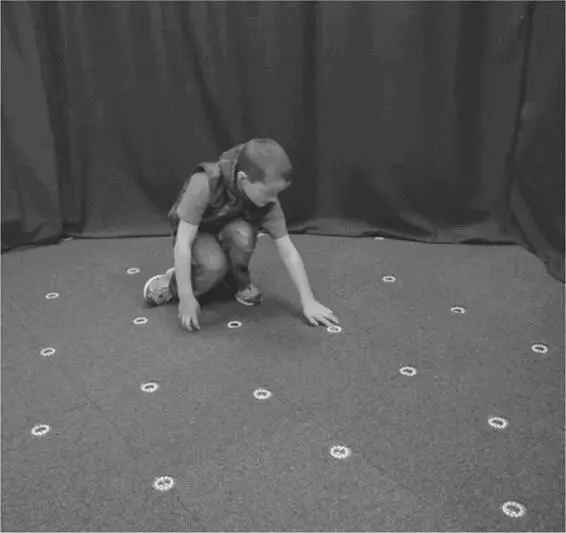Bruce Hood - The Domesticated Brain - A Pelican Introduction (Pelican Books)
Здесь есть возможность читать онлайн «Bruce Hood - The Domesticated Brain - A Pelican Introduction (Pelican Books)» весь текст электронной книги совершенно бесплатно (целиком полную версию без сокращений). В некоторых случаях можно слушать аудио, скачать через торрент в формате fb2 и присутствует краткое содержание. Год выпуска: 2014, ISBN: 2014, Издательство: Penguin Books Ltd, Жанр: Старинная литература, на английском языке. Описание произведения, (предисловие) а так же отзывы посетителей доступны на портале библиотеки ЛибКат.
- Название:The Domesticated Brain: A Pelican Introduction (Pelican Books)
- Автор:
- Издательство:Penguin Books Ltd
- Жанр:
- Год:2014
- ISBN:9780141974873
- Рейтинг книги:4 / 5. Голосов: 1
-
Избранное:Добавить в избранное
- Отзывы:
-
Ваша оценка:
- 80
- 1
- 2
- 3
- 4
- 5
The Domesticated Brain: A Pelican Introduction (Pelican Books): краткое содержание, описание и аннотация
Предлагаем к чтению аннотацию, описание, краткое содержание или предисловие (зависит от того, что написал сам автор книги «The Domesticated Brain: A Pelican Introduction (Pelican Books)»). Если вы не нашли необходимую информацию о книге — напишите в комментариях, мы постараемся отыскать её.
The Domesticated Brain: A Pelican Introduction (Pelican Books) — читать онлайн бесплатно полную книгу (весь текст) целиком
Ниже представлен текст книги, разбитый по страницам. Система сохранения места последней прочитанной страницы, позволяет с удобством читать онлайн бесплатно книгу «The Domesticated Brain: A Pelican Introduction (Pelican Books)», без необходимости каждый раз заново искать на чём Вы остановились. Поставьте закладку, и сможете в любой момент перейти на страницу, на которой закончили чтение.
Интервал:
Закладка:
Hot and cold
One useful distinction that has been made when considering the role of the PFC is the difference between ‘hot’ and ‘cool’ EFs. 16Hot EFs include those impulses and urges that are biological imperatives or emotionally charged drives that threaten to take over control of our thoughts and actions, whereas cool EF refers to the logical choices that one has to make when presented with a problem to solve that requires rationality. We use cool EFs when we have to remember a telephone number or a list of things to buy from the store. Most of us will repeat the information over and over to keep it fresh in our minds before we forget. If the list of items is too long, we forget the beginning before we get to the end. The task is even harder if we have to remember two numbers or, worse still, if someone starts talking to us when we are trying to concentrate. Cool EFs enable us to keep focused on the problem. In contrast, hot EFs interrupt ongoing events and make us switch priorities. When the danger signs are detected, the hot EFs swing into action to protect us.
Developmental neuroscientist Yuko Munakata proposes that the PFC operates in two ways to regulate hot and cold decisions. 17First there is the direct suppression of those drives and impulses by pathways that block the activity of mechanisms that are associated with hot, emotional EFs. Other thoughts and behaviours that represent the cold EFs that make up the normal routines of a typical day are regulated by indirect inhibition. These also need to be coordinated but without the need to shut down behaviours in the same way that hot EFs require. Munakata argues that this control is achieved by temporarily boosting the activity of different cortical regions. These support all the different options one is presented with when faced with a decision. In this competition, options with the strongest activation win out over those that are less active and so a decision is reached by the relative strength of different choices. Inhibition is not targeted at one behaviour in particular, but arises as a collateral effect of raising the profile of some options over others.
Changing your mind
Imagine that you are on an Easter-egg hunt out in the garden, where your goal is to find all the delicious chocolate-egg-hiding locations. So you set off and check under a bush here, or a tree there. But what if you could not remember where you had searched? You would end up returning to locations that you had already checked.
In our laboratory, we investigate children’s searches using an automatic version of an Easter-egg hunt, where the goal is to check at all the locations that are lit up by pressing each light to see if it changes colour. A computer keeps track of all the searching, and we found that, below six years, children are very haphazard in how they go about the task and often return to locations they have already checked. They run around like headless chickens, drawn by each light even though they may have already checked it. The silent manager in their PFC is failing to coordinate and keep track of their behaviour. Rarely do they follow a systematic strategy. 18
Easter-egg hunts might be a popular modern game but they are not too dissimilar to foraging. Not only did our ancestors hunt on the plains of the African savannahs, but they also foraged for nuts and berries. Remember how foraging requires a larger brain in the South American spider monkey in comparison to its close cousin the howler monkey, who simply loafs around eating leaves? Some of the extra brain tissue of the spider monkey is related to the need to remember locations and not make the mistake of returning to previous places they have visited. Even hunting requires remembering where you have been and not always going back to previous locations.
One way to be efficient in searching is by stopping yourself from returning to pastures old. This requires inhibiting the temptation to go back. Such flexibility to avoid doing something is an important role of the frontal lobes that can be conspicuous in its absence. Adults with frontal-lobe damage can easily sort cards with coloured shapes into piles corresponding to either shapes or colours. However, if you ask them to sort according to one dimension such as colour and then get them to change in the middle of the task to the other dimension of shapes, they find it difficult to switch to the new strategy. They get stuck or perseverate in the response that was correct previously. What is more striking is that they can often acknowledge that they need to switch to the new sorting rule but still cannot stop themselves. They lack the ability to change their ways. 19

Figure 8: Searching for targets in our ‘foraging’ room
Again this is a pattern that you see in normal development. Young children often get stuck in routines and indeed often seem to like repetition. It may be the familiarity they enjoy or it may be that they lack the flexibility to process changing information. This lack of flexibility is again related to the immaturity of the PFC, which no only keeps thoughts in mind, but also prevents us doing things that are not longer appropriate. This is why babies will continue to reach directly for a desirable toy in a clear plastic box only to discover that they cannot grasp it when their tiny hands bash up against the edge of the box. 20Even though the side of the clear box is open and they can reach around to retrieve the toy, the sight of the goal is so compelling that they keep reaching directly for it. If you cover the object so that it is out of sight, they then learn to stop reaching directly for it. Something about the sight of the toy compels them to act. It’s like showing an addict the fix they so desperately seek; they cannot avoid the temptation.
Even well-adjusted adults are not immune from doing the first thing that pops into their heads. One simple way to demonstrate this problem of inhibitory control is the Stroop test – a very simple task where you have to give an answer as quickly as possible in a situation where there is competition or interference from another response. 21The most familiar version of the task can be found in a number of ‘brain-training’ games where you have to name the colour of ink that a word is written in. The task is easy if the word is ‘red’ and it is written in red ink. More difficult is when the word is ‘green’ but is written in red ink, because there is a conflict between naming the ink and the tendency to automatically read the word. Here is another Stroop task that you may not have encountered. Try counting the number of digits in each line as fast as you possibly can.
How many numbers are there in each row?
If you were answering as fast as you can, then you will have found the first four rows very easy but the next four much harder. You probably made mistakes, and if not, then you were probably much slower. Like the sight of a desirable toy for a baby, digits trigger the impulse to read them. As the digit conflicted with the number of items in some of the lines, the word had to be inhibited in order to give the correct answer.
If you break down a complex task into a list of things to do, then you can readily see why inhibition is so critical to performance. Some tasks need to be carried out in sequence, which is why I was hopeless at building model airplanes. I am too impulsive for the task – something that was evident as a child when I always wanted to start painting my models before they were fully assembled. I lacked the patience that such hobbies require. This is why inhibition is necessary for planning and controlling behaviour by avoiding thoughts and actions that get in the way of achieving your goals. We can all experience this to some extent and it changes as we age. As we grow elderly, we become stuck in our ways. We lose flexibility of thought and can become more impulsive. Both the stubbornness and impulsivity are linked to the diminishing activity of our frontal lobes, which is just part of the normal ageing process. As we age, the PFC and its connections that regulate behaviours deteriorate faster than other brain areas. 22At the beginning and the end of life, we lack the flexibility provided by our frontal lobes.
Читать дальшеИнтервал:
Закладка:
Похожие книги на «The Domesticated Brain: A Pelican Introduction (Pelican Books)»
Представляем Вашему вниманию похожие книги на «The Domesticated Brain: A Pelican Introduction (Pelican Books)» списком для выбора. Мы отобрали схожую по названию и смыслу литературу в надежде предоставить читателям больше вариантов отыскать новые, интересные, ещё непрочитанные произведения.
Обсуждение, отзывы о книге «The Domesticated Brain: A Pelican Introduction (Pelican Books)» и просто собственные мнения читателей. Оставьте ваши комментарии, напишите, что Вы думаете о произведении, его смысле или главных героях. Укажите что конкретно понравилось, а что нет, и почему Вы так считаете.











